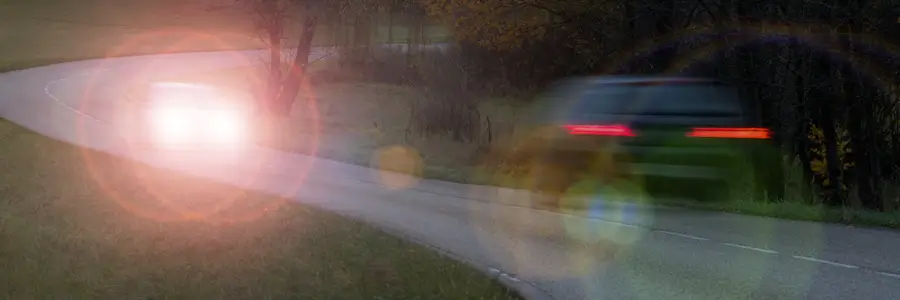A glaring mismatch at night

How often do you find yourself driving at night to be confronted by an oncoming car with dazzlingly bright lights?
Quite often, we suspect, if an RAC study into the problem of headlight glare is anything to go by.
Having surveyed 2,000 drivers, the RAC found that headlight glare from too bright headlights affected nine in 10 of those surveyed (89%).
Of those drivers that were concerned about the brightness of car headlights, 91% said being dazzled when driving was a common occurrence.
There are many reasons why there is an increasing prevalence of headlight glare, but the key ones centre around the height of vehicles and the change in light technology.
Tall, upright SUVs remain the car body style of choice in the UK: 57% of cars sold in 2023 were SUVs (more than double the number of hatchbacks). So the cars ride higher and consequently beam more directly into the oncoming driver's eyeline.
Then there's the technology. We've moved from the yellowish output of halogen lights to the greater whiteness of high intensity discharge (HID) lights - more commonly called xenon headlights - and now onto LED lights which have greater intensity and are seen on many of the new cars available to lease from Gateway2Lease. Which is ideal for the driver because more of the road ahead is illuminated, but offers little comfort to a driver in an oncoming vehicle.
What's to be done?
The RAC says it has taken the issue to the Government to commission an independent study into the issue of headlight glare.
RAC spokesman Rod Dennis said:
“Our figures suggest drivers are more concerned than ever about headlight glare, with a huge proportion wanting to see something done about it. We urgently need the Government to take a closer look at the issue, ideally by commissioning an independent study to understand what’s causing an increase in reports of dazzling and, most importantly, what can do be done to keep drivers safe."
Rob Marshall, Operations Director of Gateway2Lease said:
"For many business drivers, travelling at night comes with the job. And while most would welcome the greater visibility new headlight technology offers them, they also have to take care when approaching other vehicles at night to prevent temporary dazzle blindness. Not only is it uncomfortable it is also potentially dangerous if a driver cannot see briefly as a result.
"We will gradually be moving to lighter evenings, but in the meantime scheduling of meetings that prevent travelling at night would certainly help business drivers to get home more safely.”
Image: Shutterstock
View our latest blog posts

Categories
Pages
We are a family run business based in rural Worcestershire. Our team of 38 staff are on hand to provide an exceptional service to personal and business customers.
Read More
